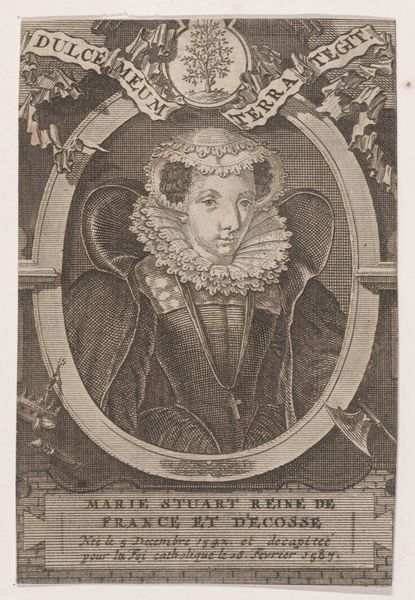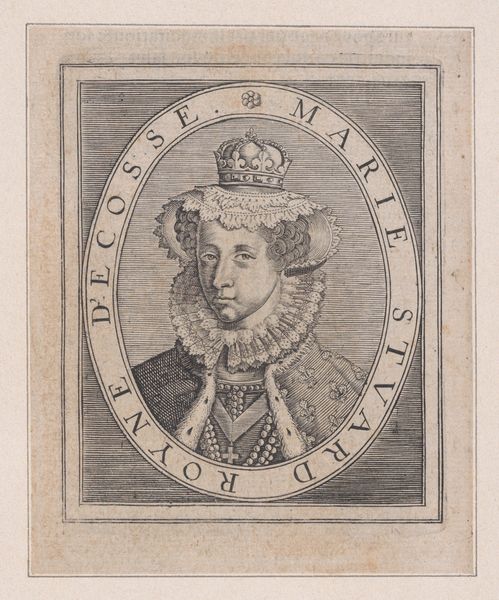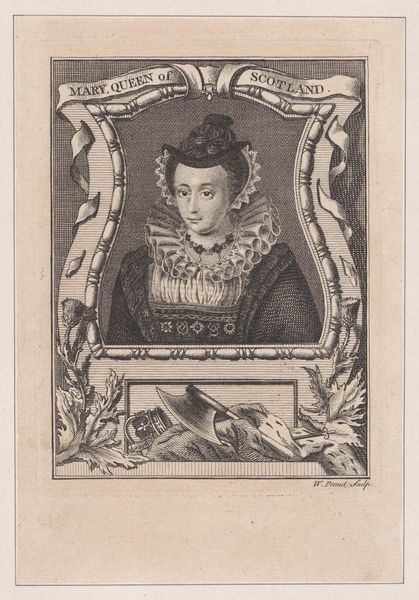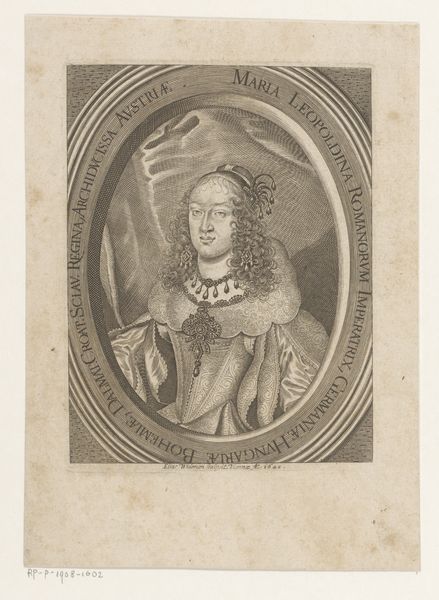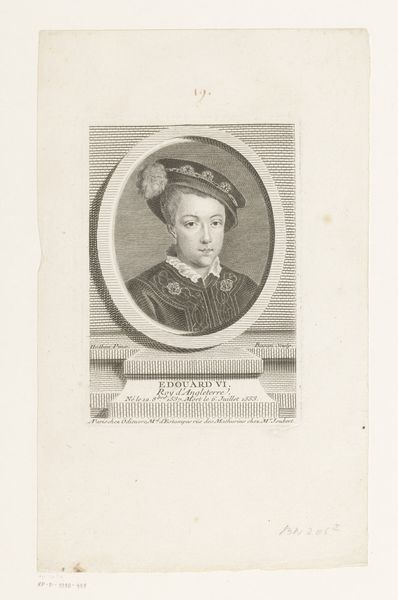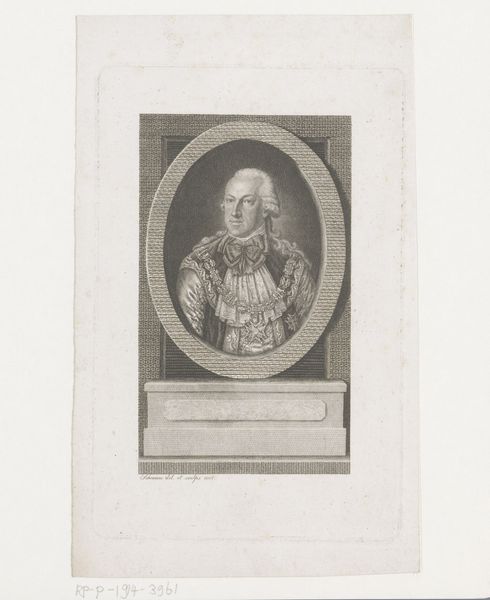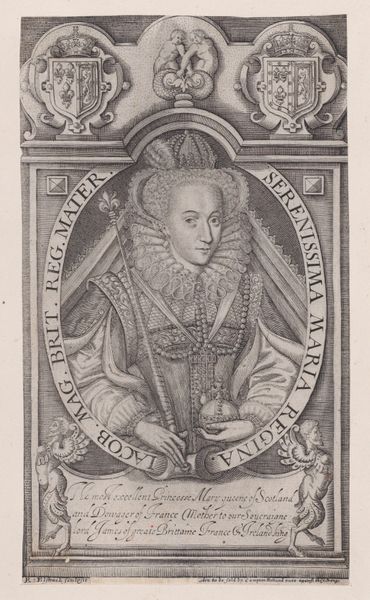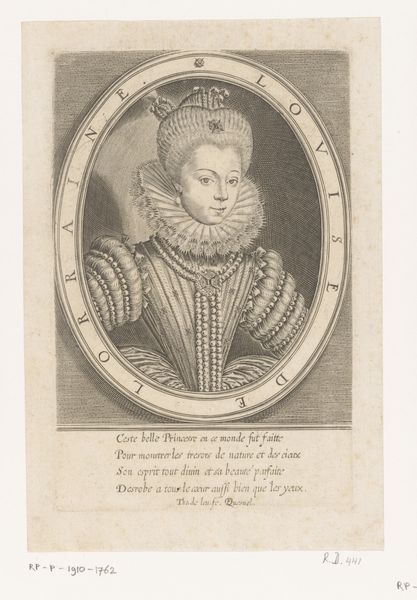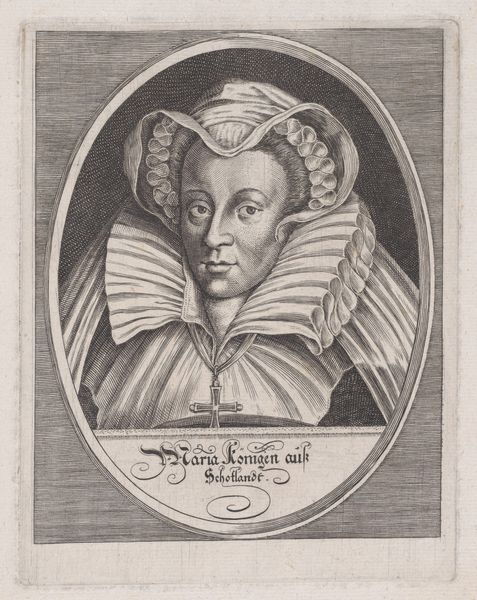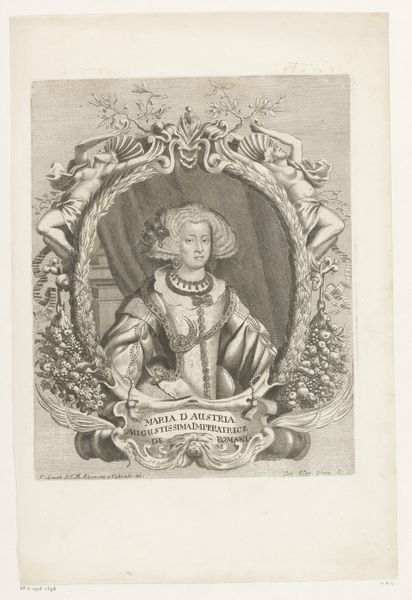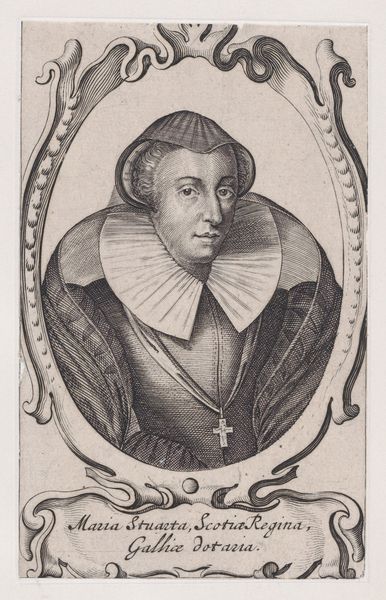
drawing, print, engraving
#
portrait
#
drawing
# print
#
11_renaissance
#
history-painting
#
northern-renaissance
#
engraving
Dimensions: Sheet: 2 11/16 × 3 1/16 in. (6.9 × 7.7 cm)
Copyright: Public Domain
Curator: Here we have an 18th-century engraving, "Mary, Queen of Scots," by John Hall, currently residing at the Metropolitan Museum of Art. Editor: There's something quite unsettling about this portrait. Her expression seems almost vacant, and the severe lines of the engraving accentuate a kind of tragic formality. Curator: Absolutely. This piece, while created much later, reflects the enduring fascination, or perhaps obsession, with Mary's life and legacy. It's impossible to view this outside the context of her tumultuous reign and eventual execution—a female monarch challenging patriarchal power structures. Editor: I'm particularly interested in the labor behind the engraving. Each line carefully etched, replicating an image of power, but also confining her within this rigid frame. It's a painstaking process. The tools used, the time invested... it speaks to the careful construction of this queen's image, long after her death. Curator: And consider the audience. Who was this print made for? What social strata? Likely the rising middle class seeking connection to aristocratic figures. The image becomes a commodity, disseminated widely to reinforce existing social hierarchies while simultaneously capitalizing on the dramatic narrative of a fallen queen. We can link that to ideas about feminine sacrifice that are always being renegotiated in society. Editor: Yes, I see that commodity aspect. The materiality itself drives that point home. This isn’t some unique painting; it’s a reproduction. An attempt at democratizing access to the royal image, but controlled and framed for consumption. The engraving itself speaks to how the materials mediate between viewer and subject, how its dissemination is part of the act of reifying an enduring legend for profit and ideological influence. Curator: The subtle gradations of tone are so impressive in this miniature monumentality! Ultimately, it’s about the interplay of power and image, of the woman herself and how patriarchal society defined her – then, and even now. What we’re seeing is an artist reflecting, in his own way, a specific view of this female historical figure and their political significance. Editor: I hadn’t considered how such a delicate print could signify the political complexities behind the reproduction, not the initial conception. Thanks! Curator: The more you consider her story, the more poignant that tragic reality becomes.
Comments
No comments
Be the first to comment and join the conversation on the ultimate creative platform.
